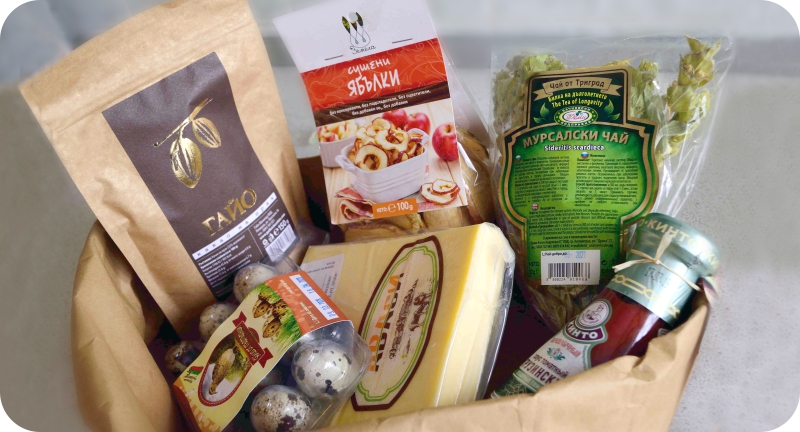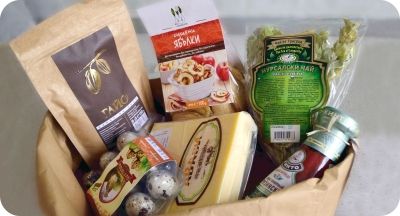Date: 06 Apr 2020

There is a large variety of types of adhesive materials for the production of labels for the food industry. This diversity can give you hundreds of opportunities and ways to present your brand and product in the best way possible. But it is precisely this variety that makes choosing the most suitable label material a difficult task.
Dilcom Bulagria is a label manufacturer with many years of experience. As such we’ll try to provide you with information about the various adhesive materials used for production of food labels.
Different materials have specific properties and characteristics. They have a different appearance, feeling, resistance and ability to adhere to different surfaces.
Food packaging labels consist of three separate layers:
- The face material of the labels - the material, that is being printed on; most often paper or foil;
- The adhesive, which is applied on the back of the face material;
- The label liner - siliconized paper or foil on which the labels are initially glued.
The first thing to consider when choosing the material for your food labels is the product package on which the label will be applied. Usually, standard adhesives have some flexibility and adhere well to plastic, metal, glass and cardboard. However, you should always keep in mind that when the adhesive and the packaging material are not compatible, it may cause label application problems.
Another factor you need to consider when choosing a material for the production of labels for food products is the environment in which the labels will be applied. Many factors can negatively affect the process of manual or automatic label application. Such are the temperature of the labels or the product and the degree of humidity of the environment and the labels. Some other things that can affect the quality of the label application process are dust, greasing, moisture or condensation, chemicals, etc.
In order to avoid all these negative factors and to guarantee high-quality in the labeling process, food manufacturers have to have good knowledge of the types of materials and adhesives. If they do, they will be able to select the most appropriate combination of face material and adhesive, specifically tailored to each application.
FOOD LABEL FACE MATERIAL:
White Semi-Gloss Paper - This is a type of paper with a surface that is processed by a machine in order to receive the needed smoothness. It is suitable for printing with most conventional printing technologies.
Like most paper materials, it is not resistant to moisture, grease or chemicals. It is not suitable for labels that need to withstand more severe conditions. It also does not have good mechanical resistance.
Its specific characteristics and good value for money make it the most widely used paper for label production for the food industry. Most often, it is combined with a permanent/ universal adhesive, easily removable adhesive or a special adhesive for frozen products.
Direct thermal paper – This is a white, matte coated paper with additional coating that is sensitive to temperatures. Most often direct thermal labels are used for printing text, graphics and barcodes in one color. They can be printed using direct thermal barcode printers and scales.
Direct thermal labels can also be pre-printed in full color using standard printing technologies. They can be used in combination with a permanent/ universal adhesive, removable adhesive or adhesive for frozen products, depending on the specific purpose of the labels.
Most manufacturers of direct thermal adhesive papers for labels offer mainly two types. The first one is Thermal Eco - non-protective direct thermal paper, most commonly used by scales in supermarkets and stores. The second type is Thermal Top - this paper has an additional protective coating on the thermal layer and the paper itself, which enhances the label resistance to moisture and grease. This makes them suitable for frozen, dairy and meat products.
Foil materials
The most commonly used foil materials in the food industry are white or transparent PPE. We offer it with a glossy or matte finish. This material is also available in a version with thermal coating and can be used for overprinting by scales or direct thermal printers. This combination can make the foil label looks luxurious and at the same time be functional and very resistant.
Foil labels are suitable for products stored at extremely high humidity. They are resistant to oils and are suitable for dairy, meat products, oil, etc.
LABEL ADHESIVES:
Permanent / universal adhesive
The universal adhesive is suitable for adhering to cardboard packaging, glass bottles, some plastic packaging and metal. It is suitable for a wide range of applications in the food industry. However for some specific ones it is recommended to use specialized adhesives, designed to meet the relevant requirements.
Easily removable adhesive
This adhesive is designed to adhere well to slightly rough surfaces. Removable adhesive labels can be easily peeled off and re-applied in case of improper adhesion. In this way it offers manufacturers flexibility and facilitates the label application process.
The easily removable adhesive is also used in cases where there should be no residue or traces left when removing the label from the product. It is often used for marking fresh produce such as fruit and vegetables, so that customers can easily remove the label prior to consumption.
A disadvantage of this adhesive is that it may not be as easily removed from very smooth surfaces. Learn more about the labels with an easily removable adhesive and their applications by reading this article.
Adhesive for frozen products
This adhesive is specially designed for food products with wet surfaces, frozen products or products that are stored or transported at low temperatures. In case you need food labels that will be applied to such products, you may use a combination of different face materials and an adhesive for frozen products.
LABEL LINER TYPES:
Siliconized paper is most commonly used for the production of the label liner. If you are using a highly performing label applicator, a foil liner is more appropriate. It is more durable and does not tear in the process of food labeling. Another advantage of foil liners is their ability to be recycled.
Prior to ordering your food or drink labels, you also need to make sure that the nutrition information and other data recorded on the label follows the nutrition labeling requirements of your country. The labels should show information such as the serving size, fat per 100g, total sugars, as well as exact amounts of fat, sugars and salt.
Manufacturers could also include marketing information that differentiates their food from similar products. That information could encourage customers who for example eat foods that are the healthier choice, to buy a certain product because the label clearly illustrates that the food item has low fat saturates.
Our specialists will support you throughout the food labelling process. We will help you make the right choice for your food packaging labels so that they fully comply with your brand vision, labeling process and product storage requirements.


Post comment